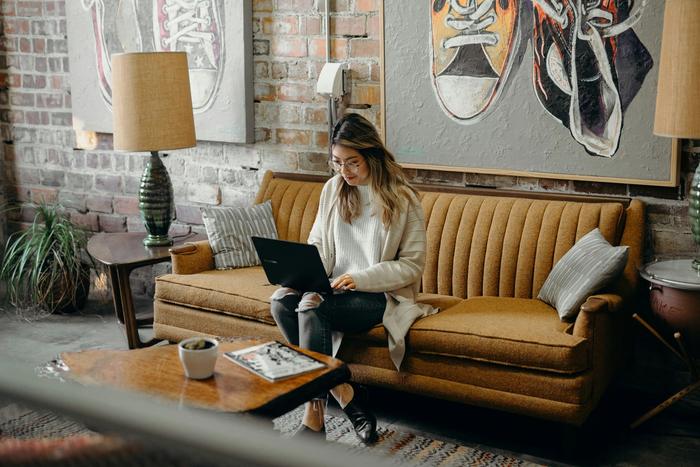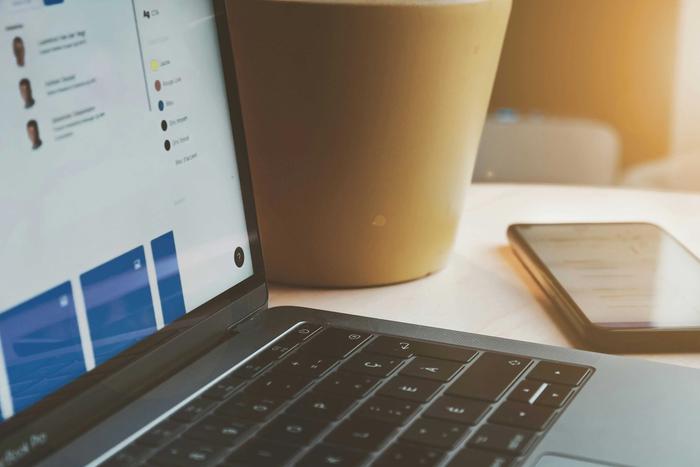Email marketing lets you reach vast numbers of people simultaneously.
However, its success depends on your emails landing in your subscribers' inboxes.
If you're noticing underperformance in your campaigns or a sudden drop in open rates, you could be on an email blocklist.
Understanding blocklists, the implications for your business, and strategies for both removal and avoidance are crucial.
This blog post will guide you through the essentials of blocklists, help you determine if you're listed, and provide tips to keep your email marketing effective and clean.
What is an email blocklist?
An email blocklist is a database that includes email addresses, IP addresses, and domain names identified by spam filters as problematic.
Email blacklists are a specific type of email blocklist that focuses on the sender's IP address to prevent spam. This is done by identifying and blocking emails from IP addresses reported as spammers.
Web servers use these databases to prevent spam from reaching users by blocking or rerouting emails to spam folders.
Being on a blocklist can significantly disrupt your email marketing.
It can prevent your campaigns from reaching their intended audience and their mobile devices and impact your business negatively.
Blocklists are maintained by both email and email service providers, and individual users and can be IP-based or domain-based, affecting how emails from those addresses are handled.

The impact of being blocklisted
When your legitimate emails are blocked or filtered, your business suffers.
Effective email marketing is vital, especially for B2B companies, where it’s often the most used content marketing and sales channel.
Blocked communications mean lost sales opportunities and potential damage to your brand reputation and customer relationships.
Being on a blocklist can significantly complicate your email marketing efforts, impacting the deliverability and success of your email marketing campaign.
This requires additional vigilance and planning for your campaigns and newsletters.
If your IP, email, or domain lands on spam, IP, or domain blocklists, you could face major obstacles that might impact your profitability and the effectiveness of your email marketing campaign. So, you must frequently check your blocklist status.
Being listed on multiple blocklists may damage your domain’s reputation, your company’s image, and the overall success of your email marketing campaigns.
This not only affects your current email deliverability but can also lead to further complications with other monitoring authorities often referred to as ‘spam police’.
Understanding different types of blocklists
Not all blocklists will have a severe impact on your marketing, some are minor and rarely used by email providers.
However, large, widely-used blocklists like a Spamhaus block list, a SpamCop blocking list, and Proofpoint can severely affect your email deliverability.
How blocklisting occurs
Avoiding blocklists means understanding how they work. There are public blocklists, private ISP blocklists, and enterprise spam firewalls. ISPs can blocklist IPs at their discretion, often without notice. Practices that can lead to blocklisting include:
- Poor email list hygiene, such as not removing inactive subscribers, ignoring unsubscribe requests, or not checking for bounced email addresses
- Sending to spam trap addresses, which are set up specifically to catch spammers
- Creating content with spammy keywords like “guarantee” or using excessive punctuation.
How do blocklists get compiled using spam traps?
Blocklists are developed through a surprisingly swift technical process. Spam filters evaluate incoming emails based on a scoring system.
Accumulating too many points from certain actions can result in a sender being blocklisted. We’ve listed some of the typical spam folder triggers below.

Emailing inactive recipients
This involves sending unsolicited messages to long-inactive users or to those who have previously marked emails as spam, as well as emails that consistently bounce back.
Spike in email volume
An abrupt increase in the volume of emails sent around key times like Black Friday or holiday seasons can trigger issues..
Increased sending frequency
Suddenly ramping up the frequency of emails without prior notice can lead to a surge in spam complaints, raising triggerspam filters.
Large email lists
If an email list grows unusually fast, spam filters may suspect it’s a purchased list, a common practice for spammers.
Manipulated email headers
Altering email header information, such as the ‘From’ and ‘Return path’ details, to forge sender identity is a definite way to get blocklisted.
Actions such as sending spam or distributing unsolicited bulk emails are also triggers for being added to a blocklist.
These practices involve sending email messages, often in large volumes, to recipients who have not consented to receive them, often leading to a negative user experience and complaints.
If you are using an email marketing or email service provider, they will likely alert you if your activities resemble spamming behaviour.
Checking and responding to blocklisting
Regularly monitoring your email performance can clue you into potential blocklisting if you experience a sudden change in metrics like open rates or engagement.
Tools like MultiRBL, MX Toolbox, and Barracuda can help check if your IP is on a blocklist.
If you find your IP address or domain on a blocklist, many organizations offer an appeal process to remove it.
After clearing your name, maintaining email marketing best practice is essential to avoid future blocklisting, so your campaigns reach their audience and your business thrives.

What to do if you find yourself on a blocklist
Many businesses experience being on a blocklist at some point because of the sheer number of existing blocklists.
Being listed can signal that it’s time to refine your email practices, especially if you're on a major list managed by an Internet Service Provider, significantly impacts your email deliverability. Here, we’ve listed what to do if you find yourself on a blocklist.
1. Identify the blocklist
Start by determining which blocklist(s) include your domain. You can use various tools to check this which we’ve listed below.
- MXToolbox: This offers tools to check MX records, perform blacklist checks, test email servers, check domain health, and more. Monitoring services are available with a subscription.
- Spamhaus: Spamhaus checks domain names and IPs against their databases.
- Blacklist Alert: Blacklist Alert lets you check an IP or domain.
- MultiRBL: MultiRBL offers a comprehensive check against nearly 350 blocklists.
- DNSBL: This focuses solely on IP addresses.
- WhatIsMyIPAddress: WhatIsMyIPAddress checks IPs against over 60 blocklists.
- Project Honeypot: This provides detailed listing reasons and information about neighboring IP addresses.
2. Assess the impact
If your domain appears on just a few minor blocklists, it may not significantly affect your overall email deliverability.
However, presence on multiple lists, especially those used by large ISPs, requires immediate action.
3. Request removal
Most blocklists provide a method to request removal. You can typically find a link to the blocklist’s resolution center directly from their website.
Here, they will guide you through the necessary steps to de-list your IP or domain. This often involves demonstrating that you’ve rectified the issues that led to the listing, such as improving email list management, your email templates, or adjusting your email-sending practices.
By promptly addressing the reasons you were listed and reaching out for removal, you can minimize the impact on your email campaigns and keep your emails flowing.

How to prevent your email marketing from being placed on a blocklist
Preventing blocklisting is far more manageable than removing your email from a blocklist. By using preventative measures, you can ensure your email campaigns maintain high deliverability.
One crucial strategy is to only email opt-in subscribers, emphasizing the importance of obtaining explicit and informed consent.
This practice is essential to prevent your emails from being flagged as spam, ensuring they reach the inboxes of recipients who have recently confirmed their willingness to receive your communications.
Here, we’ve listed other ways to prevent your email marketing from being put on a blocklist.
Only email opt-in subscribers
Your email campaigns should target individuals who have actively consented to receive communications from you.
This informed consent is usually given through a subscription form on your website or a landing page.
Adhering to this practice isn't just about good marketing etiquette, it's often a legal requirement under regulations like GDPR.
Avoid purchasing email lists
Purchasing email lists might seem like a quick way to expand your reach, but it's fraught with risks, including the potential inclusion of outdated or fraudulent addresses and spam traps.
Moreover, buying lists can violate data protection laws such as GDPR, leading to significant fines and damaging your email deliverability.
Implement double opt-ins and encourage whitelisting
Double opt-ins verify that a subscriber's email address is valid and that they genuinely wish to receive emails from you, enhancing the quality of the message senders to your email list.
Encouraging subscribers to whitelist your emails ensures your communications bypass spam filters and reach their inboxes.
Maintain a clean email list
Regularly cleanse your list of inaccuracies, such as typographical errors, inactive subscribers, and bounced emails.
A clean list reduces the risk of hitting spam traps and helps maintain a healthy sender reputation.
Optimize your email practices
Ensure your emails are crafted following the best practices we’ve listed below.
- Sender name: Use a recognizable sender name
- Subject lines: Avoid spammy keywords. Craft subject lines that pique interest without being misleading
- Content quality: Keep your content concise and reader-friendly. Use well-structured templates with clear headers to improve readability
- Unsubscribe options: Clearly provide an unsubscribe link. Making it easy for users to opt out can decrease the likelihood of being reported as spam
By following these guidelines, you can significantly reduce the risk of being blocklisted and ensure your email marketing efforts are successful and compliant.

Wrapping up: email blocklists
Navigating email blocklists is vital for ensuring your marketing campaigns reach their audience.
Blocklists can significantly impact your email deliverability, affecting your engagement and overall business growth. Understanding the causes of blocklisting and implementing strategies to avoid or get off these lists is crucial.
Regular monitoring of your email status, using tools to check for blocklisting, and adhering to best email practices help in maintaining effective email outreach.
Utilizing reliable platforms like Capsule’s CRM to manage your campaigns can greatly enhance your efforts in maintaining a healthy email and active mailing list. It’s native integration with Transpond, our email marketing automation suite is a game-changer for sales and marketing teams.
Sign up for Capsule’s 14 day free trial and see the positive changes in your marketing efforts.
FAQs
Sometimes, IP addresses get on email blacklists due factors like sending lots of spam emails, receiving various spam complaints, or it may be identified as sending unsolicited emails from a spammy website.
A blocklist is often used interchangeably with a blacklist, however, they are different. A blacklist is a list of known threats whereas a blocklist may include entities that may not be threats but are still denied access.
Email blocklists is a list of domains or IP addresses that are flagged by spam filters for sending spam. Internet Service Providers (ISPs), anti-spam vendors, and free mailbox providers use the blocklists so that they can keep their email marketers and systems spam-free.




